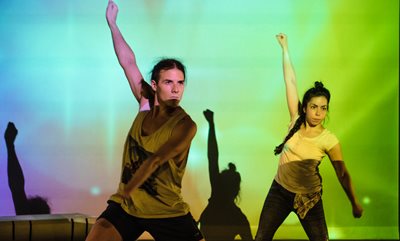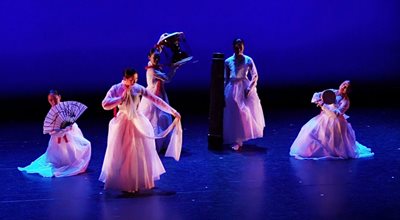Featured Story
April 2019
.jpg?width=5184&height=3456&ext=.jpg) The Placemaking Project, from community-building arts organization Art Starts, animated Ellesmere Skate Park in Scarborough in 2018. Lead mural artist, Jacquie Comrie (Photo courtesy Art Starts)
The Placemaking Project, from community-building arts organization Art Starts, animated Ellesmere Skate Park in Scarborough in 2018. Lead mural artist, Jacquie Comrie (Photo courtesy Art Starts)
Diversity in Toronto comes in many forms. Women, people with disabilities, people living with mental illness, Deaf people, immigrants and refugees, lesbian, gay, bisexual and transgender persons, youth, people who experience socio-economic disadvantage, and people of different faiths all contribute to the city’s makeup.
Toronto Arts Council values and recognizes the unique contributions of all members of Toronto’s arts community both to the cultural life of the city and to its own operations, aspirations and vision.
As the City of Toronto’s funding body for Toronto artists and organizations, Toronto Arts Council is committed to ensuring that our services are equitable and accessible.
TAC has long played an active role in promoting equity and inclusion in the arts for many years, says Andrew Suri, Director of Granting and staff lead on the Equity Steering Committee at Toronto Arts Council.
“In the early 1990s, TAC recognized the great potential for cultural development in Toronto and the central role and responsibility that TAC plays in removing barriers to access City arts and cultural resources,” Suri notes. “TAC has renewed and expanded its commitment to the advancement of equity in granting and in how we operate as an organization.”
In 1992, TAC released its first report that looked at equity practices, with help from consultant Betty Julian. Key directions articulated in the Cultural Equity report included more fully reflecting Toronto’s diverse cultural communities in TAC’s decision-making bodies, broadening definitions of artistic and cultural practices, and extending and enlarging the Council’s programs of support for individual artists.
Youth-oriented mentorship programs that connected emerging and senior Indigenous artists and artists of colour, Art Works and Fresh Elements, were created as a result of the report, as well as Culture Force, a program that allocated support and development grants to a number of arts groups serving artists of colour and Indigenous artists.
 The NDN Way/Niimi'iwe Indigenous dance double bill, Native Earth Performing Arts (Photo: Ed Maruyama)
The NDN Way/Niimi'iwe Indigenous dance double bill, Native Earth Performing Arts (Photo: Ed Maruyama)
“Past equity efforts at TAC focused on achieving racial and cultural equity,” Suri explains. “While this continues to be a priority, we have taken recent steps to more fully eliminate access barriers for Deaf artists, artists with disabilities and artists living with mental illness, and also to advance equity for individuals that self-identify as two-spirit, lesbian, gay, bisexual, transgender, queer, intersex, asexual or pansexual (2SLGBTQIAP).”
In 2017, TAC adopted the Toronto Arts Council Equity Framework, a policy that formalized its key equity principles and practices. As a result, TAC has since:
-
Identified Equity Priority Groups, which include persons of colour, Deaf persons, persons with disabilities and persons living with mental illness, Indigenous people and individuals who identify as 2SLGBTQIAP
-
Created a Voluntary Self-Identification Form for all applications to track who is applying, identify gaps and ensure that grants are awarded in an equitable manner
-
Implemented an Equity Priority Policy to ensure that applicants that self-identify as belonging to one of Toronto Arts Council’s equity priority groups have greater access to TAC funds
-
Formed an Equity Steering Committee to review equity goals and ensure implementation
-
Expanded the TAC Accessibility Grant – up to $5,000 towards accessibility accommodations for artists incurred during a project – to all TAC project programs*
-
Created committee, jury and board composition targets
-
Established equity criteria in operating programs
-
Introduced staff equity training, including training in intercultural competence, conflict resolution, anti-racism, bias awareness, the history of Indigenous peoples, and on how to provide accessibility supports and/or accommodations to applicants.
-
 Mi Young Kim Dance Company
Mi Young Kim Dance Company
The results from TAC granting in 2018 are encouraging: 87 percent of TAC applicants completed the Voluntary Self-Identification form; 51 percent of those applying for TAC grants identified with TAC equity priority groups; 42 percent of equity group applicants were successful – higher than the 37 percent average for non-equity group applicants overall.
Suri was invited to speak to the Creative City Strategies symposium in March, hosted by the City of Vancouver, Cultural Services, to discuss TAC’s leadership in equity initiatives in both granting and operations.
“People often say that Toronto is the most diverse city in Canada and one of the most diverse in the world,” Suri says. “That this diversity is well-represented or prioritized in the cultural policies and artistic productions created in this city is far less certain and cannot be taken for granted. It is important to keep this in mind when we speak about being equitable as a public granting agency.
“As a basis of human expression, the arts are central to the very idea of equity, because advancing equity in the arts elevates those whose voices are not heard, whose expressions are not experienced.”
(* NOTE: Additional funding for projects involving Deaf artists and artists with disabilities is available to individuals and organizations/ collectives applying to TAC Arts Project Grant Programs. Information about TAC Accessibility grants can be found on our website in the Project Grants program description and guidelines for each discipline or strategic program.)